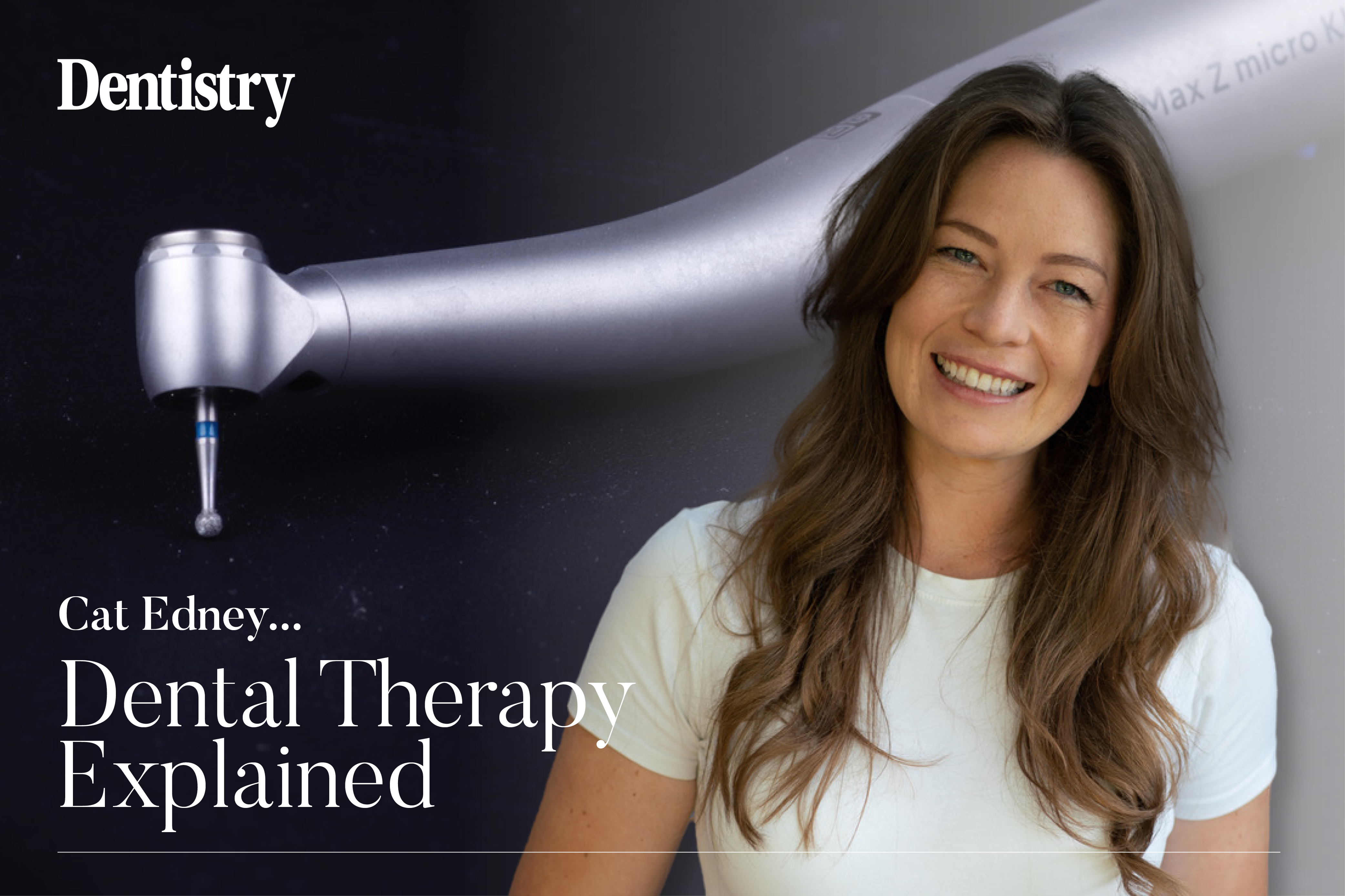
In her brand new column, Cat Edney hopes to dispel the common myths attached to the role of the dental therapist. This month she breaks down the full scope of practice of dental therapists and how to integrate them into practice.
The dental therapist’s role has been in existence in varying forms for over sixty years in the UK.
The initial dental auxiliaries were trained to work within dental hospitals. But very quickly (and with a lot of work from the British Association of Dental Therapists) the role developed into the practice-based dental therapist we all know and love today!
But do people really know what a dental therapist is?
The title has always been a tricky one for the general public to understand, however I believe this could be in part due to a reluctance or general lack of awareness in the profession as a whole.
Over the course of writing this column I hope to dispel the common myths attached to the role of the dental therapist and to tackle the big questions surrounding how to integrate dental therapy into practice.
I would also like to support readers who are interested in a therapy-based model – both therapists themselves, dental practice owners and the rest of the dental team.
Understanding the role of a dental therapist
The start of this is understanding the role. What is written the scope of practice for a dental therapist and how does this ten-year-old document relate to real world working in 2023?
The most recent update to the GDC scope of practice document in 2013 was due to the introduction of direct access working. The scope of practice was amended to include examination and diagnosis within competency.
However, it should be noted that no additional training was deemed necessary, as dental therapists already qualified at this point had been trained to the standard required to provide examinations and to diagnose.
With this change to the scope came a number of new possibilities when it comes to shared care arrangements in practice.
With dental therapists able to provide all direct restorations, diagnose and treatment plan these restorations independently of their BDS colleagues means dental practices could work in a new way, reducing consult time for dentists and specialists alike.
Scope of practice
The first section of the dental therapist scope of practice document covers this well:
- Obtain a detailed dental history from patients and evaluate their medical history
- Carry out a clinical examination within their competence
- Complete periodontal examination and charting and use indices to screen and monitor periodontal disease
- Diagnose and treatment plan within their competence
- Prescribe radiographs
- Take, process and interpret various film views used in general dental practice
- Plan the delivery of care for patients
- Give appropriate patient advice
- Provide preventive oral care to patients
- Liaise with dentists over the treatment of caries, periodontal disease and tooth wear.
Dental practices could well consider utilising their dental therapists to undertake all exams and refer on to the appropriate dentist or specialist should they wish to.
There are a number of models that incorporate dental therapy, in private practice, NHS and mixed arrangements.
What treatment can they carry out?
The scope of practice document goes on to describe the types of treatments dental therapists can carry out:
- Undertake supragingival and subgingival scaling and root surface debridement using manual and powered instruments
- Use appropriate anti-microbial therapy to manage plaque related diseases
- Adjust restored surfaces in relation to periodontal treatment
- Apply topical treatments and fissure sealants
- Give patients advice on how to stop smoking
- Take intra and extra-oral photographs
- Give infiltration and inferior dental block analgesia
- Place temporary dressings and re-cement crowns with temporary cement
- Place rubber dam
- Take impressions
- Care of implants and treatment of peri-implant tissues
- Carry out direct restorations on primary and secondary teeth
- Carry out pulpotomies on primary teeth
- Extract primary teeth
- Place pre-formed crowns on primary teeth
- Identify anatomical features, recognise abnormalities and interpret common pathology
- Carry out oral cancer screening
- If necessary, refer patients to other healthcare professionals.
Dentist concerns
One of the main concerns I hear from dentists who are thinking of referring their patients to a dental therapist is that they don’t know how to explain the role to their patients. There is often a risk of over complicating an explanation to the point of confusing patients.
In much the same way as patients have been referred to a dental hygienist for oral health and periodontal management, you can refer to your dental therapist for direct caries management. ‘Our dental therapist will do all the fillings’.
In articles to come I will hope to cover:
- Direct access and dental therapy
- Referring to a therapist
- Financial benefit of a dental therapist
- Digital dental therapy
- Minimally invasive dental therapy
- Further education for dental therapists
- And more…
Cat Edney is currently running a hands-on composite course across the UK. It will cover full posterior composite, rubber dam, photography, digital scanning, portfolio building and tooth whitening.
Click here to view the course dates and book a place.
Follow Dentistry.co.uk on Instagram to keep up with all the latest dental news and trends.


